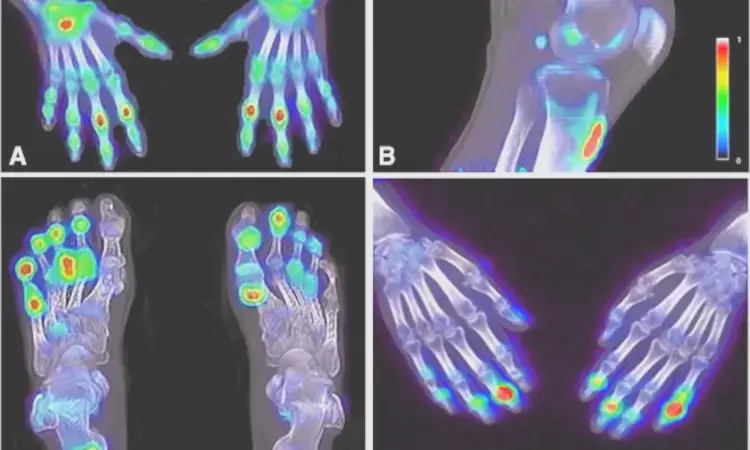- Home
- Medical news & Guidelines
- Anesthesiology
- Cardiology and CTVS
- Critical Care
- Dentistry
- Dermatology
- Diabetes and Endocrinology
- ENT
- Gastroenterology
- Medicine
- Nephrology
- Neurology
- Obstretics-Gynaecology
- Oncology
- Ophthalmology
- Orthopaedics
- Pediatrics-Neonatology
- Psychiatry
- Pulmonology
- Radiology
- Surgery
- Urology
- Laboratory Medicine
- Diet
- Nursing
- Paramedical
- Physiotherapy
- Health news
- Fact Check
- Bone Health Fact Check
- Brain Health Fact Check
- Cancer Related Fact Check
- Child Care Fact Check
- Dental and oral health fact check
- Diabetes and metabolic health fact check
- Diet and Nutrition Fact Check
- Eye and ENT Care Fact Check
- Fitness fact check
- Gut health fact check
- Heart health fact check
- Kidney health fact check
- Medical education fact check
- Men's health fact check
- Respiratory fact check
- Skin and hair care fact check
- Vaccine and Immunization fact check
- Women's health fact check
- AYUSH
- State News
- Andaman and Nicobar Islands
- Andhra Pradesh
- Arunachal Pradesh
- Assam
- Bihar
- Chandigarh
- Chattisgarh
- Dadra and Nagar Haveli
- Daman and Diu
- Delhi
- Goa
- Gujarat
- Haryana
- Himachal Pradesh
- Jammu & Kashmir
- Jharkhand
- Karnataka
- Kerala
- Ladakh
- Lakshadweep
- Madhya Pradesh
- Maharashtra
- Manipur
- Meghalaya
- Mizoram
- Nagaland
- Odisha
- Puducherry
- Punjab
- Rajasthan
- Sikkim
- Tamil Nadu
- Telangana
- Tripura
- Uttar Pradesh
- Uttrakhand
- West Bengal
- Medical Education
- Industry
18F-sodium fluoride PET-CT visualizes bone formation in psoriatic arthritis patients: Study

Netherlands: For imaging patients with psoriatic arthritis (PsA), F-18 sodium fluoride (NaF) PET/CT may be a valuable tool as it reveals the formation of new molecular bone in the peripheral joints missed out on clinical evaluation, a recent study has shown. The study findings were produced in the European Journal of Nuclear Medicine and Molecular Imaging.
Psoriatic arthritis is an inflammatory and chronic musculoskeletal disease linked with psoriasis and several musculoskeletal manifestations, particularly enthesitis, a painful inflammation at the site where ligaments or tendons attach to bone. The formation of new bone can accompany enthesitis activity in PsA.
Bone formation is associated with psoriatic arthritis, and positron emission tomography through an F-18 NaF tracer may enable a sensitive depiction of disease activity. Jerney de Jongh, Amsterdam UMC, Amsterdam, the Netherlands, and colleagues primarily aimed to determine the practicality of whole-body 18F-NaF PET-CT in clinically active patients with psoriatic arthritis to depict new bone formation, which reflects disease activity at peripheral joints and entheses. Secondly, they aimed to describe findings on 18F-sodium fluoride in the axial skeleton.
For this purpose, the researchers included sixteen patients with PsA fulfilling Classification criteria for Psoriatic arthritis (CASPAR) criteria or clinical PsA diagnosis according to a rheumatologist and with ≥ 1 clinically active enthesitis site.
A whole-body 18F-NaF PET-CT scan was performed on each patient. The researchers scored all scans for PET-positive lesions at enthesis sites, peripheral joints, and the spine. Assessment of clinical disease activity was done by swollen/tender joint count 44, enthesitis as per the MASES (Maastricht Ankylosing Spondylitis Enthesitis Score; range 0-13) and SPARCC (Spondyloarthritis Research Consortium of Canada (SPARCC; range 0-16).
The study demonstrated the following findings:
- One hundred nine joints showed PET enhancement out of 1088 evaluated joints, primarily in the metatarsal and interphalangeal joints of the feet (12.9%) and the distal interphalangeal joints of the hands (12.9%).
- The authors found PET positivity at 44/464 enthesis sites, mainly at the quadriceps tendon insertion (10/44, 22.7%) and patella tendon insertion (11/44, 25%)
- 18.2% and 29.5% were clinically positive of the PET-positive joints and enthesis sites; 81.8% and 70.5% of the PET-positive joints and entheses were clinically asymptomatic.
- The researchers observed ≥ 1 axial PET-positive lesion in 11 patients, mainly in the cervical spine.
"18F-NaF PET-CT scans can visualize the formation of new bone, indicating local PsA activity, at all peripheral disease activity sites and perhaps in the axial skeleton," the authors wrote.
"18F-NaF PET-CT may add information to the assessment of clinical disease activity, indicated by a high number of clinically negative, PET-positive sites in addition to concordant findings," they concluded.
Reference:
de Jongh, J., Hemke, R., Zwezerijnen, G.J.C. et al. 18F-sodium fluoride PET-CT visualizes both axial and peripheral new bone formation in psoriatic arthritis patients. Eur J Nucl Med Mol Imaging (2022). https://doi.org/10.1007/s00259-022-06035-w
Dr Kamal Kant Kohli-MBBS, DTCD- a chest specialist with more than 30 years of practice and a flair for writing clinical articles, Dr Kamal Kant Kohli joined Medical Dialogues as a Chief Editor of Medical News. Besides writing articles, as an editor, he proofreads and verifies all the medical content published on Medical Dialogues including those coming from journals, studies,medical conferences,guidelines etc. Email: drkohli@medicaldialogues.in. Contact no. 011-43720751


